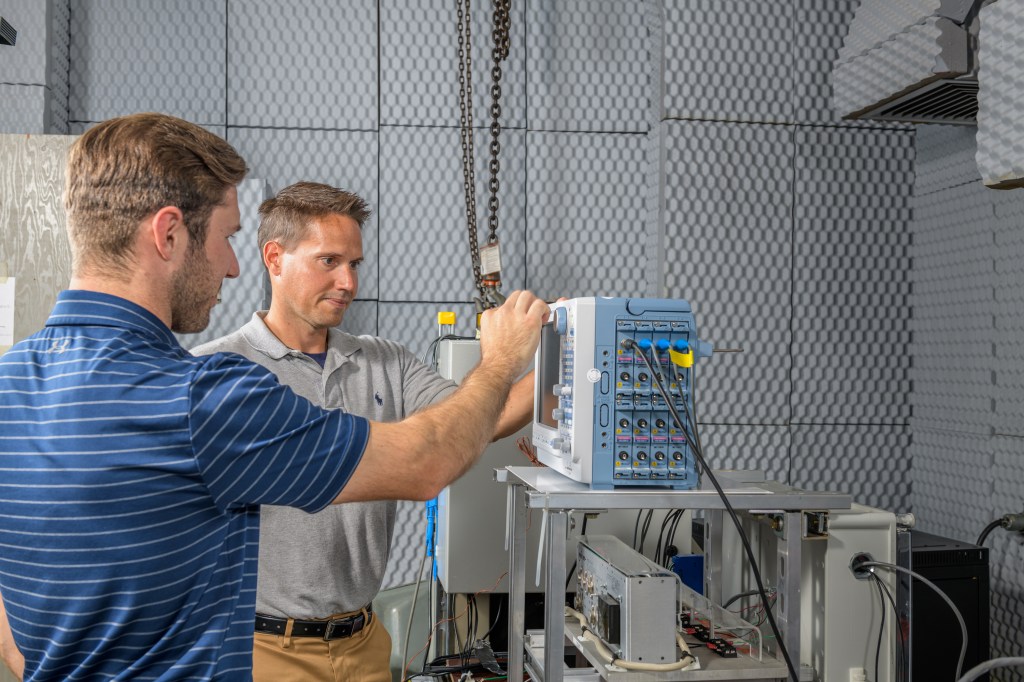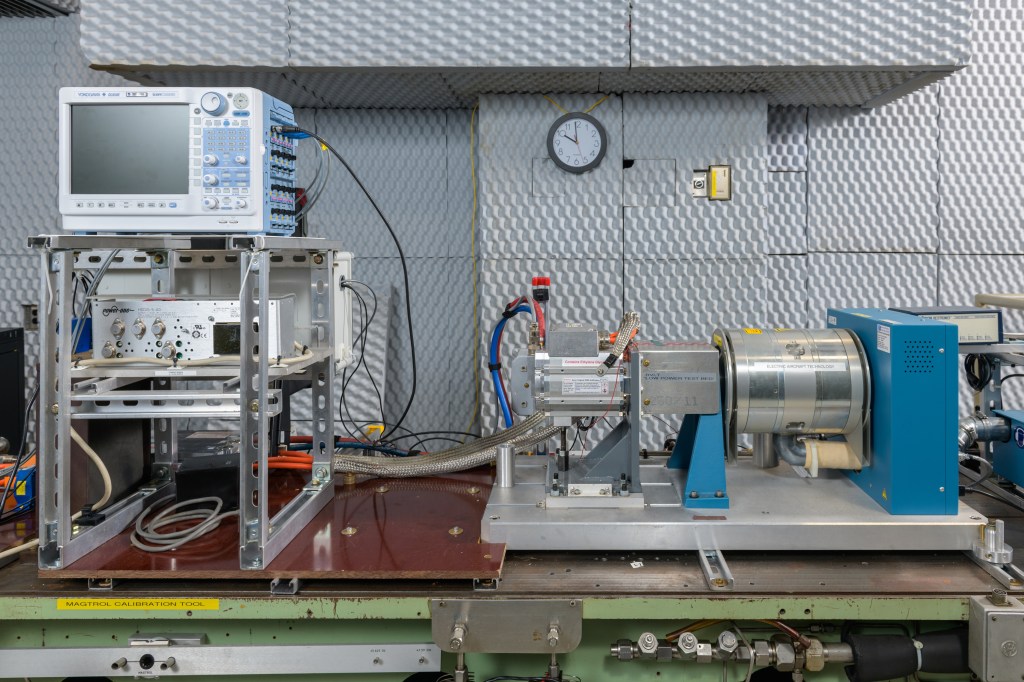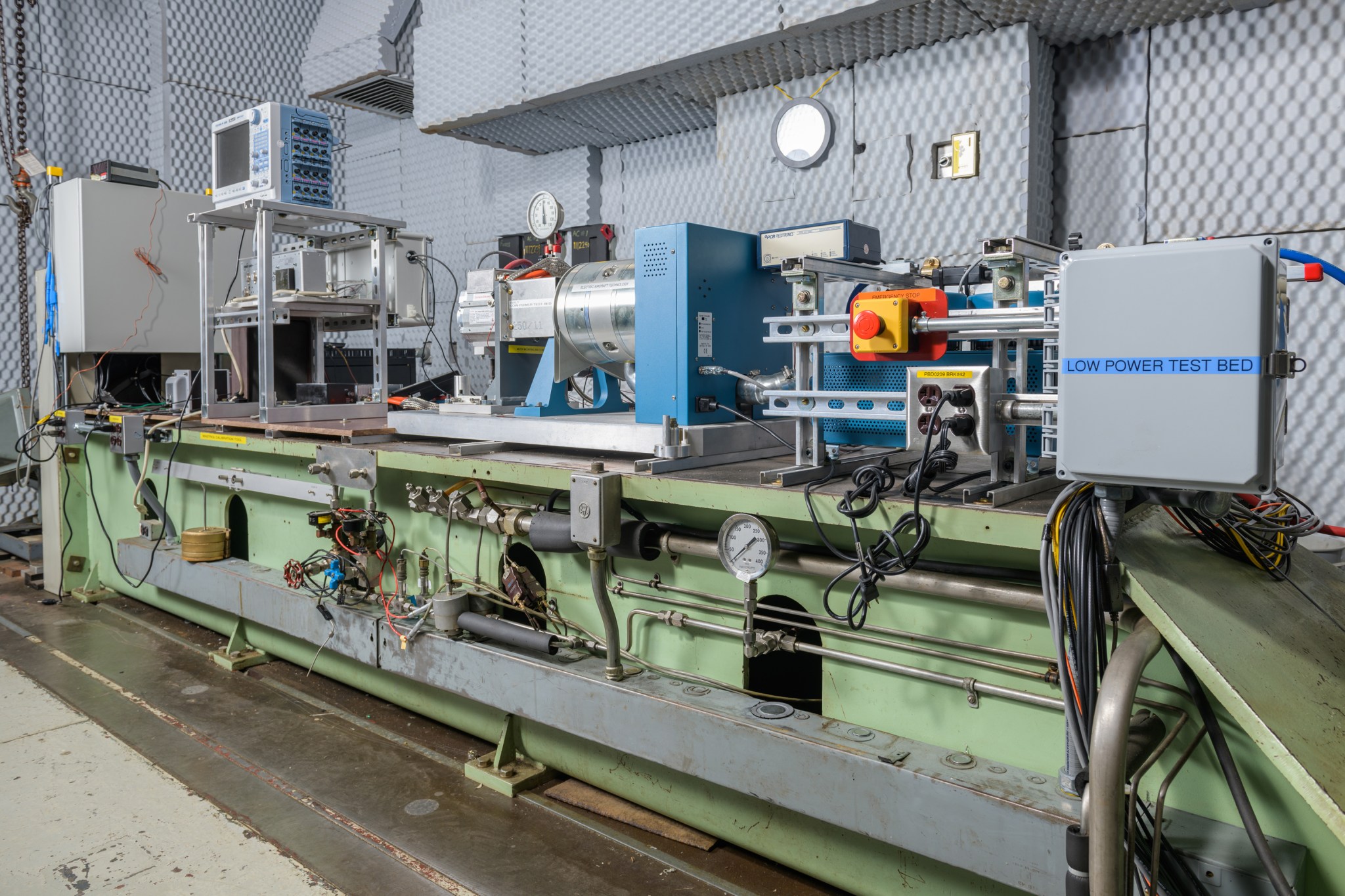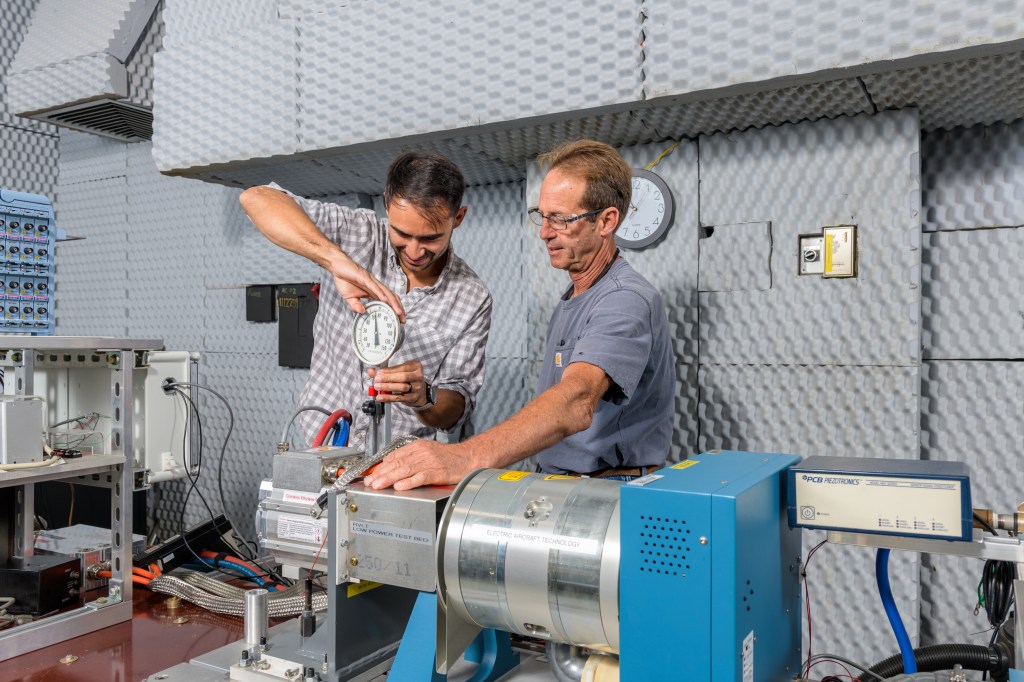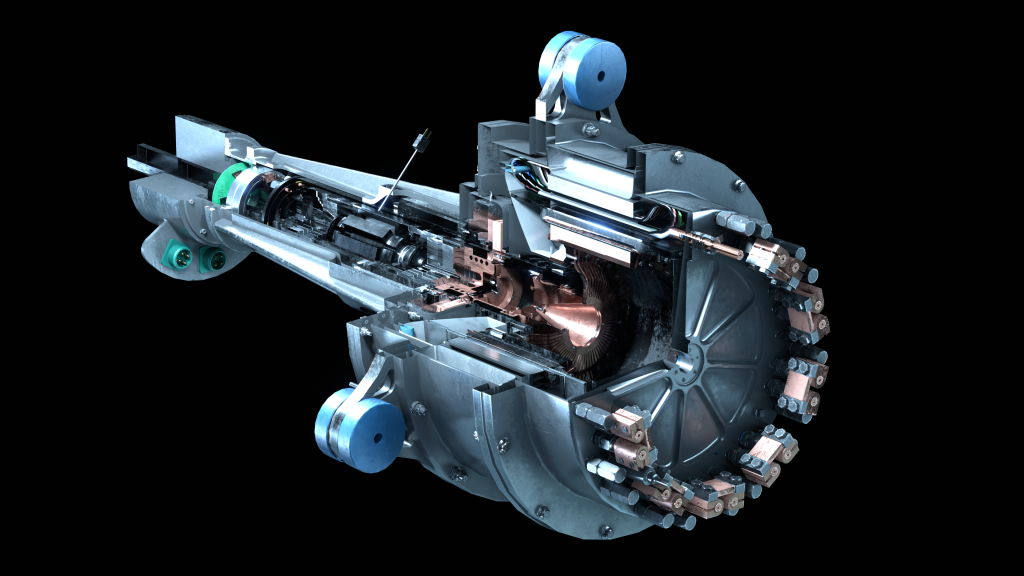SPEED
Scaled Power ElEctrified Drivetrain
The Scaled Power ElEctrified Drivetrain (SPEED) testbed at NASA’s Glenn Research Center provides testing capabilities to ensure safety and reliability in future advanced air mobility vehicles.
Quick Facts
Overview
NASA’s research in electrified aircraft propulsion is helping mature Advanced Air Mobility (AAM) concepts by facilitating new standards and technology development. The Scaled Power ElEctrified Drivetrain (SPEED) is a testbed at NASA’s Glenn Research Center in Cleveland that provides testing capabilities to ensure safety and reliability in future AAM vehicles.
SPEED is a low-power, direct current (DC), single-string testbed which uses a dynamometer as a load and can support power levels up to 9 kilowatts (kW). The testbed helps familiarize NASA engineers with electrified aircraft-related powertrains and is used to verify operations and characterize motor and inverter components before integration into the Advanced Reconfigurable Electrified Aircraft Lab (AREAL), a 200-kW high-power testbed with DC and motor emulators for reconfiguration capabilities.
Capabilities
SPEED is designed to help meet the objectives of NASA’s Revolutionary Vertical Lift Technology (RVLT) project in a low-power environment. RVLT aims to enable vertical lift vehicles and sustainable transportation by providing data to inform related standards development, best test practices, and validated modeling and analysis tools. Integration of results from SPEED into AREAL will enable teams to become familiar with new equipment at a lower power level first before increasing to higher power level testing.
SPEED will play an integral role in strengthening AREAL capabilities and reducing development times by providing lessons learned through testing and component characterization. Parallel operations can be conducted where equipment can be configured on the SPEED testbed while construction processes are occurring on the AREAL testbed.
The SPEED testbed has been used to configure and validate proper operation of numerous components of the AREAL testbed, including motor and inverter systems from commercial suppliers. Controls and data acquisition systems have also been configured to decrease Electro Magnetic Interference (EMI) and capture telemetry data at high speeds. The SPEED testbed has also been used to solve problematic grounding and shielding issues.
SPEED has been a valuable testbed for collaboration between NASA projects, including the RVLT project and the Advanced Air Transport Technologies (AATT) power and propulsion subproject. The two teams collaborated to conduct a series of electrical impedance tests – which measure the amount of electric current opposition in a circuit – that can be used to evaluate a number of electrical criteria, including power system stability, robustness, system-to-system compatibility, and best test practices.





























